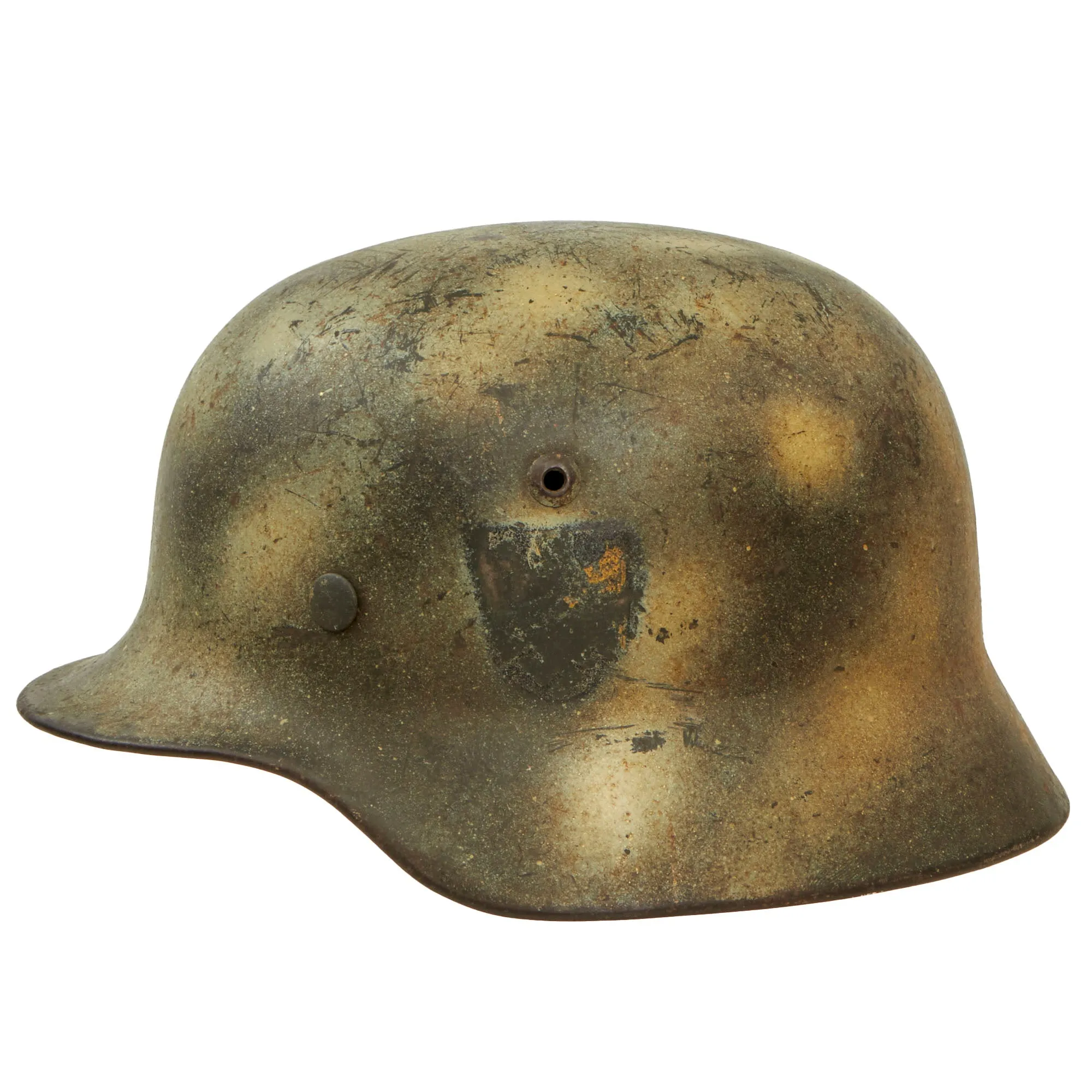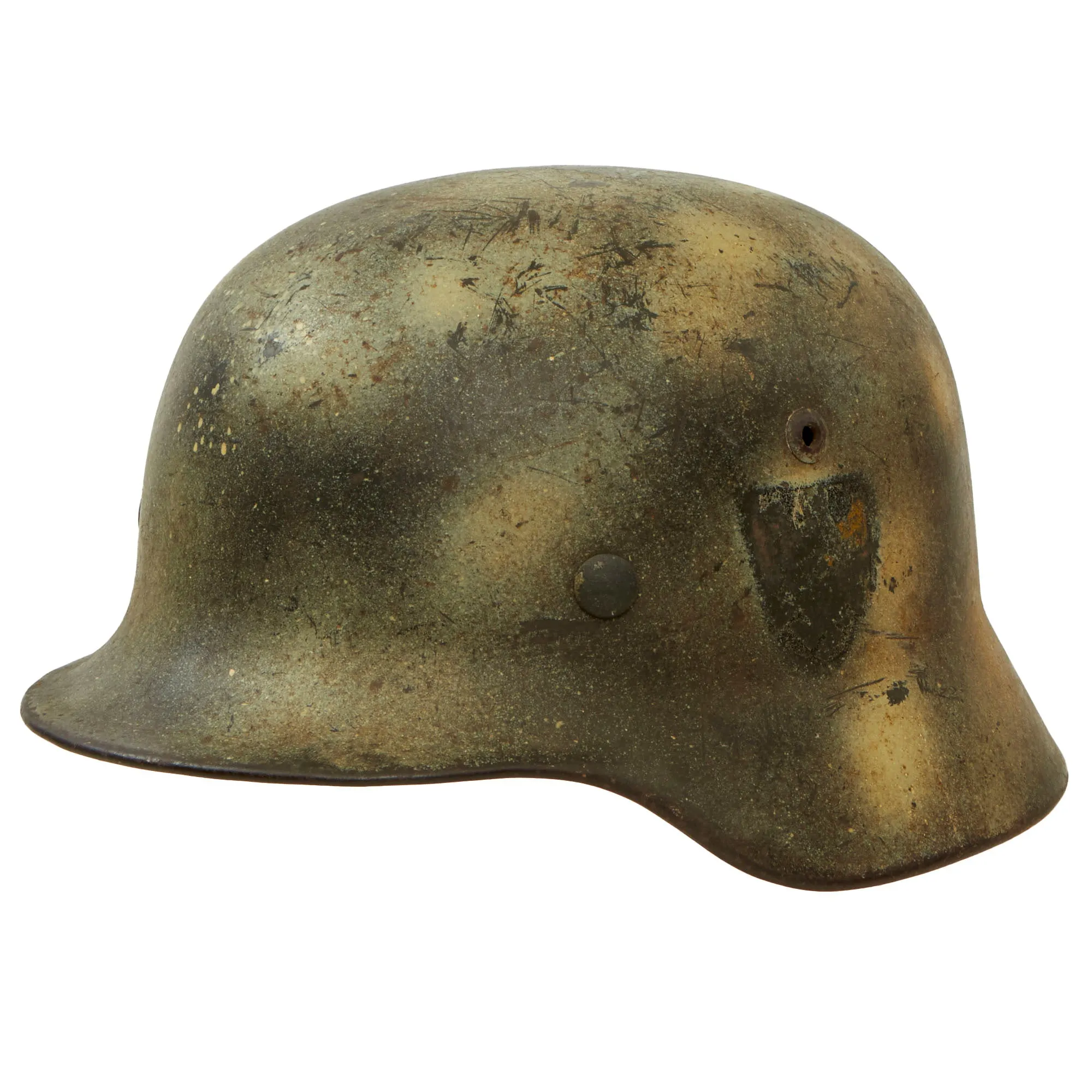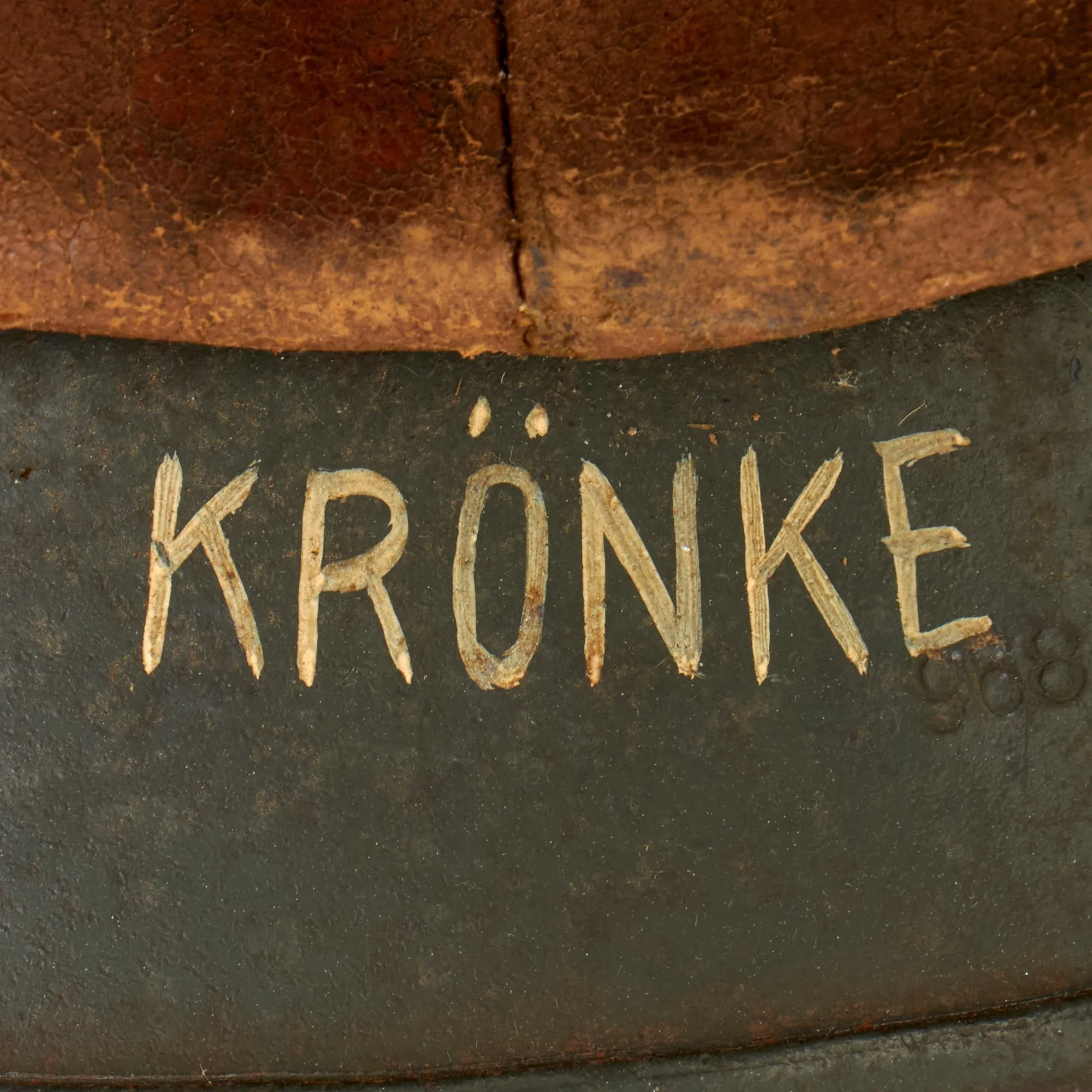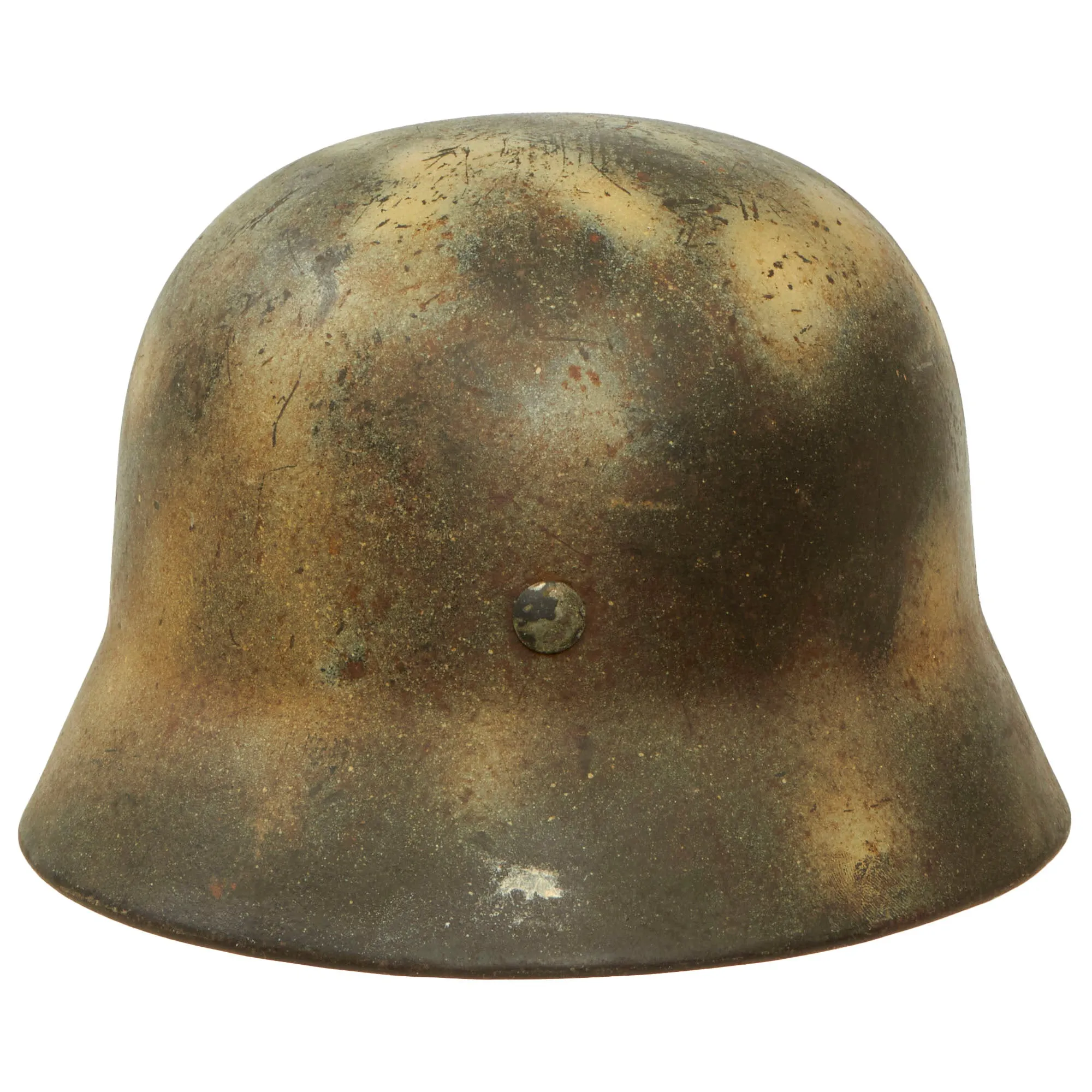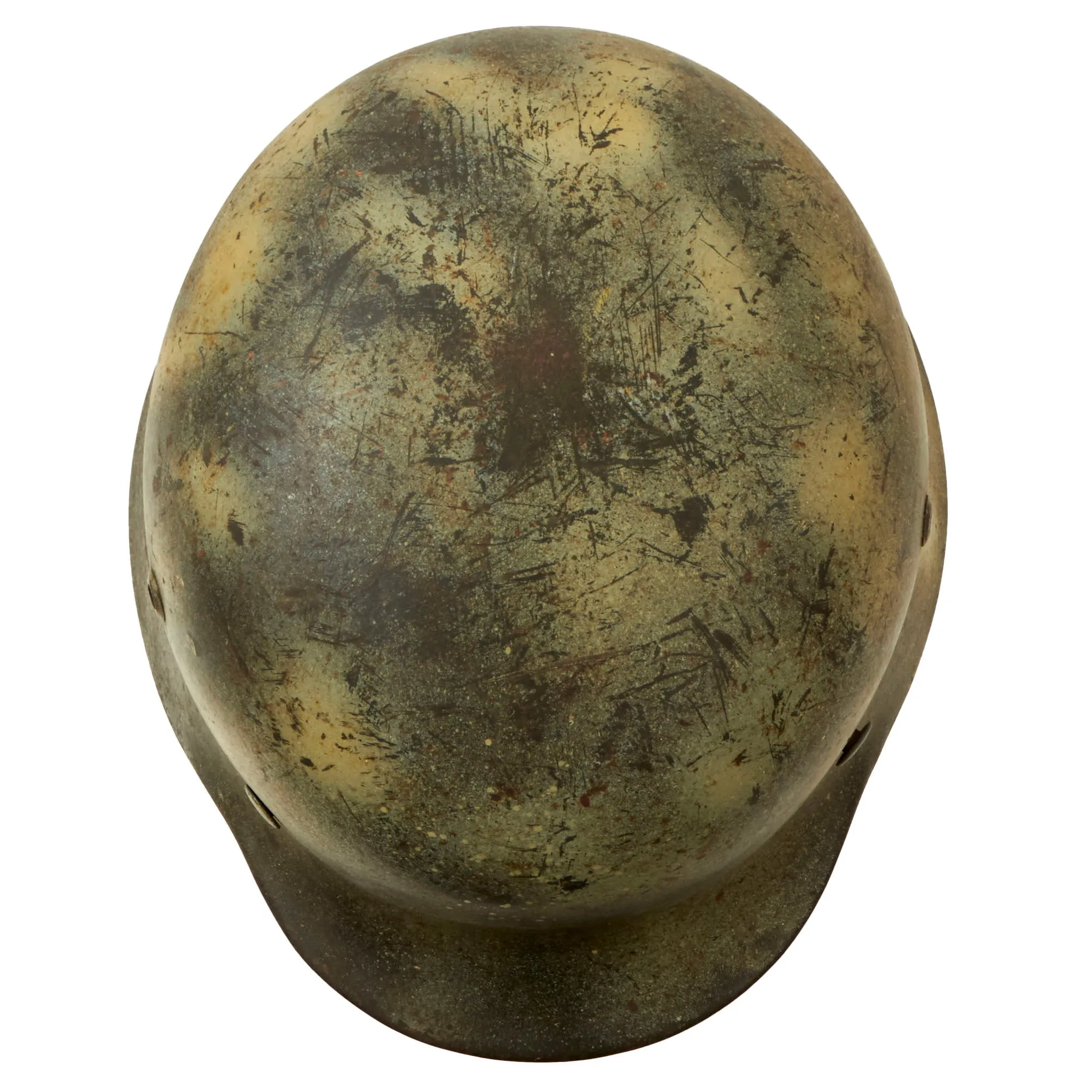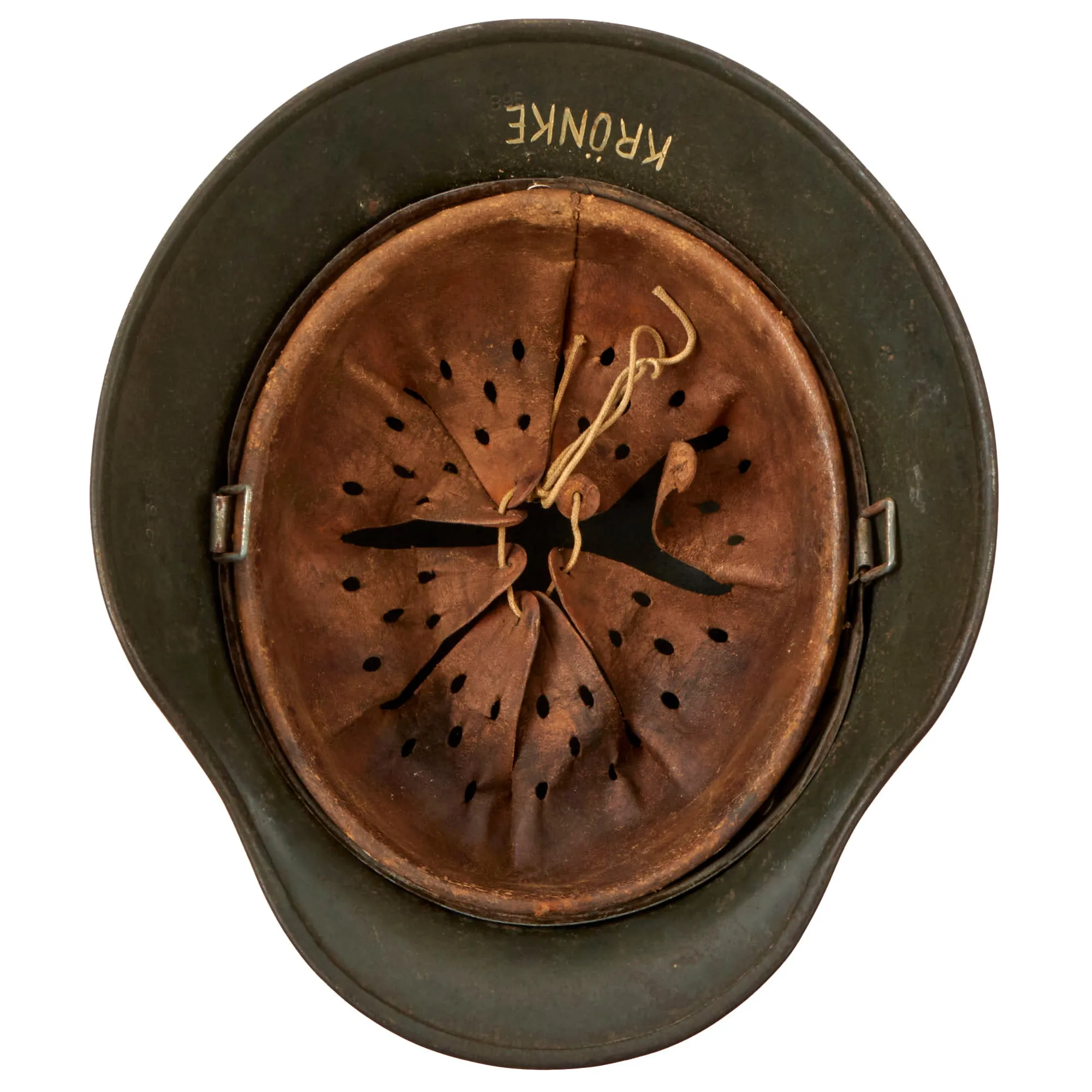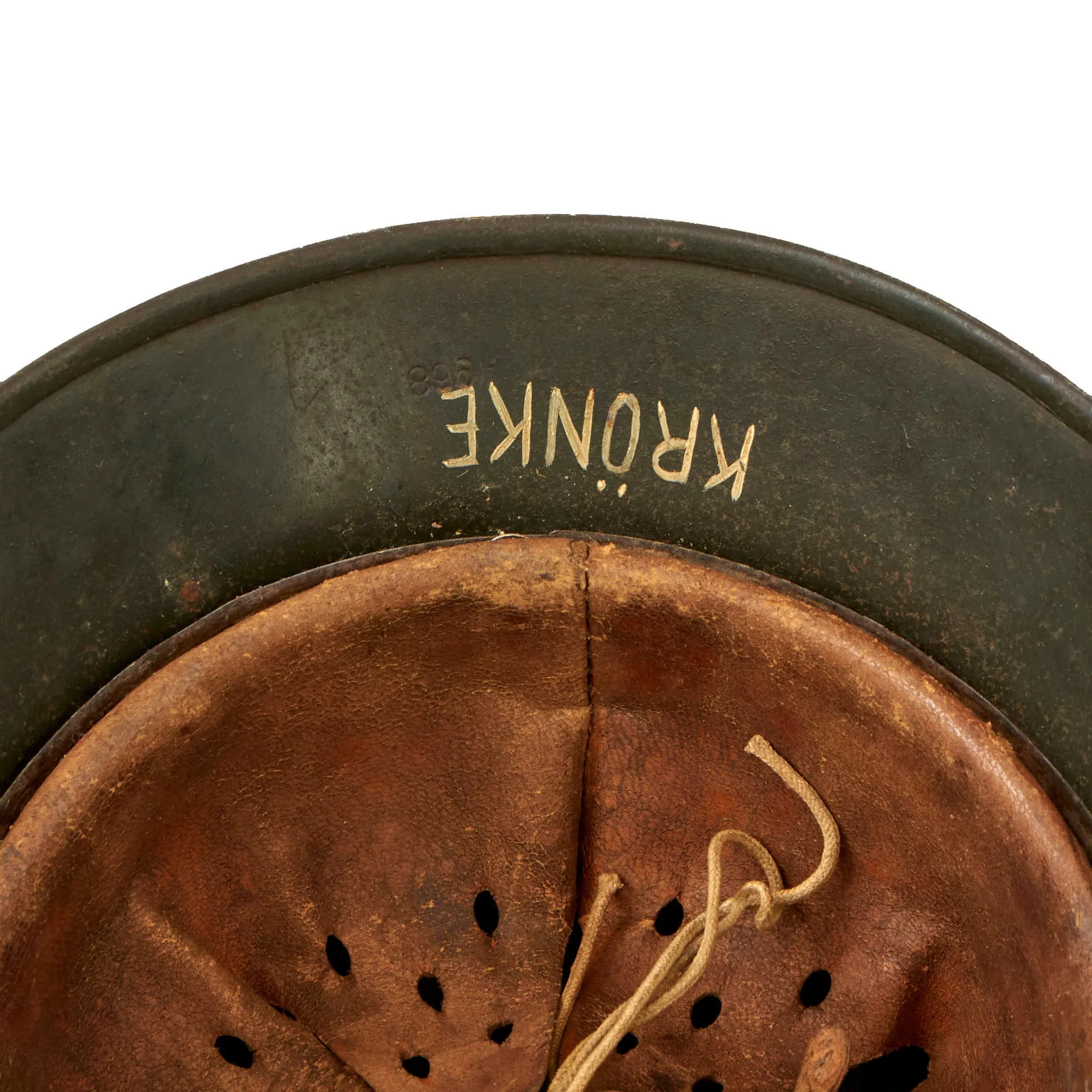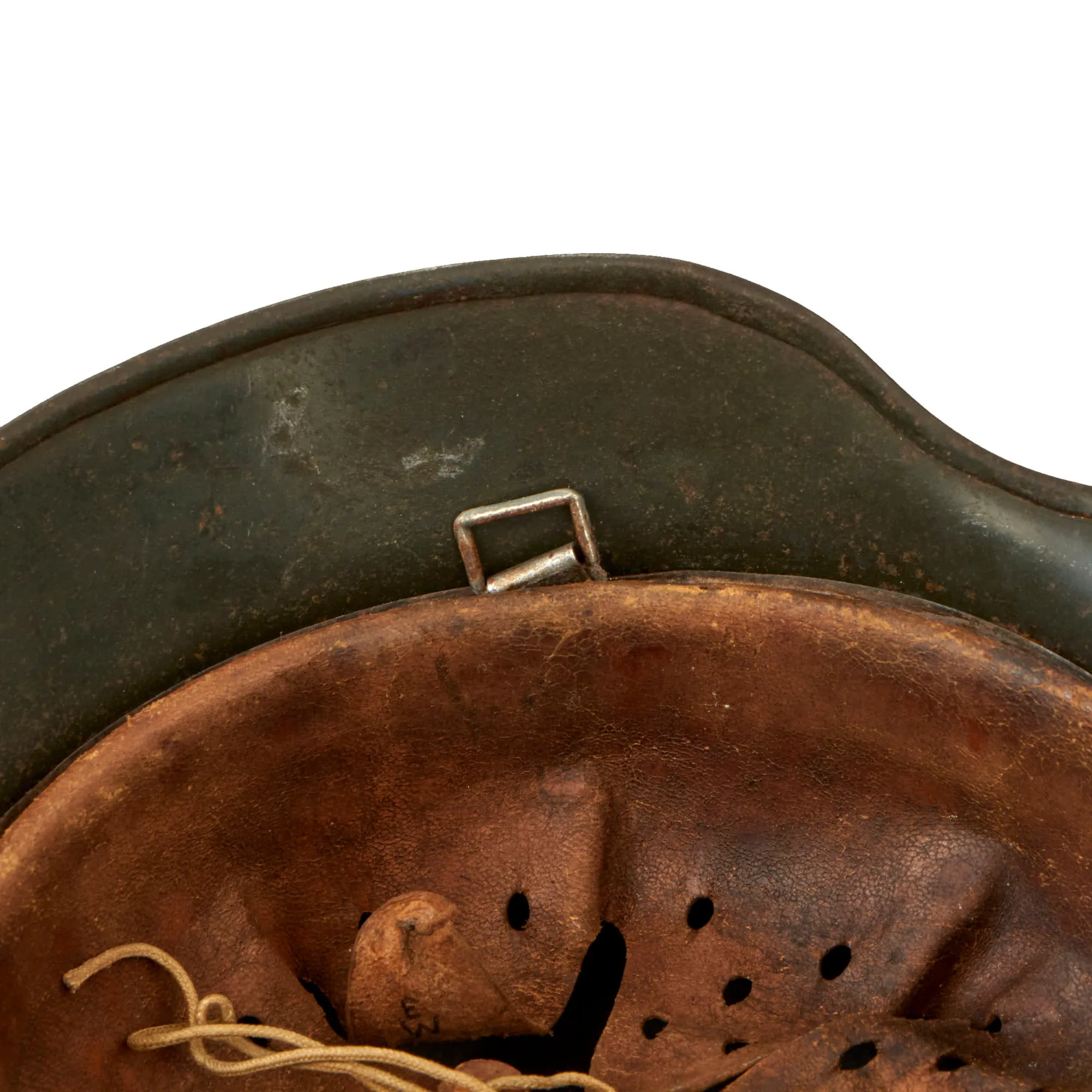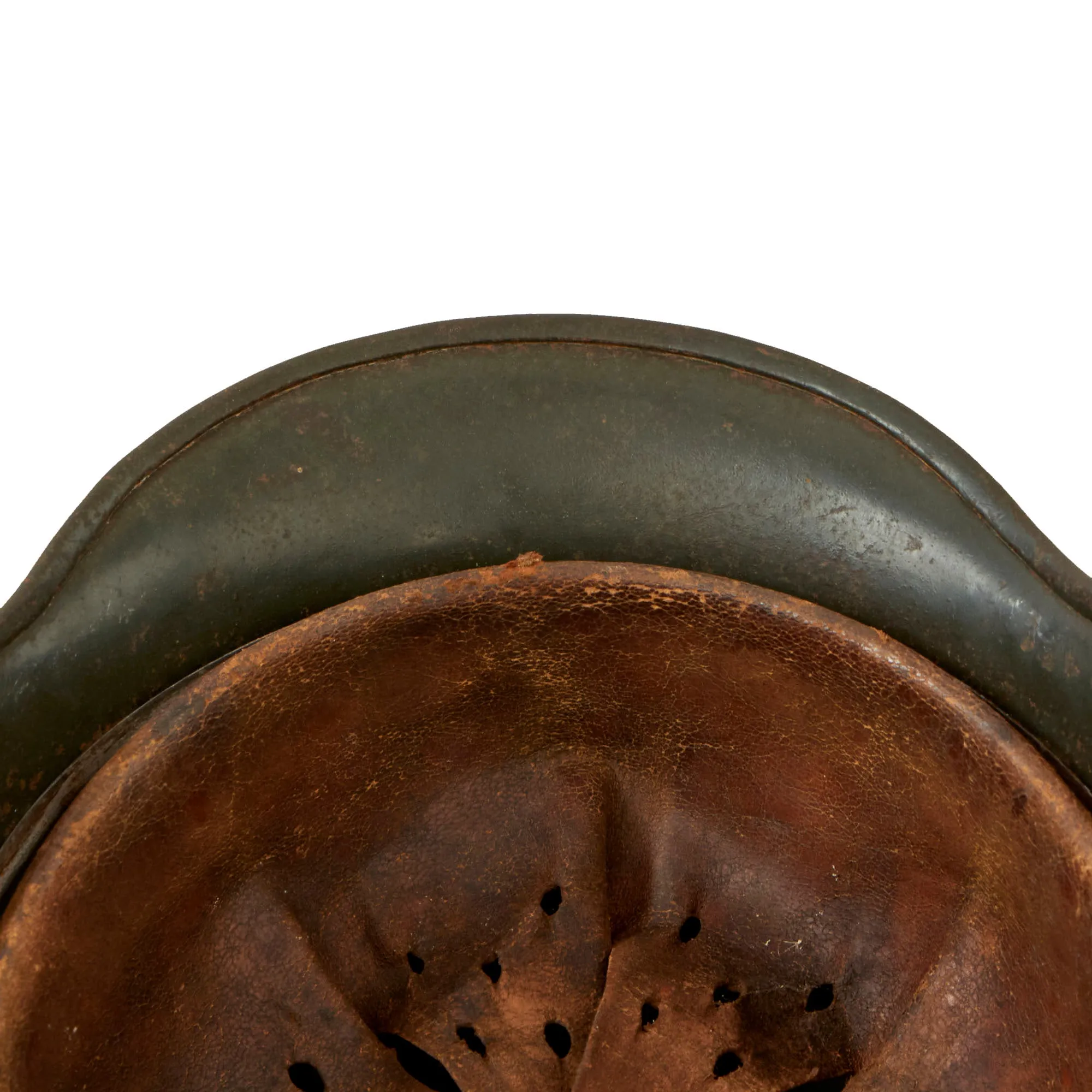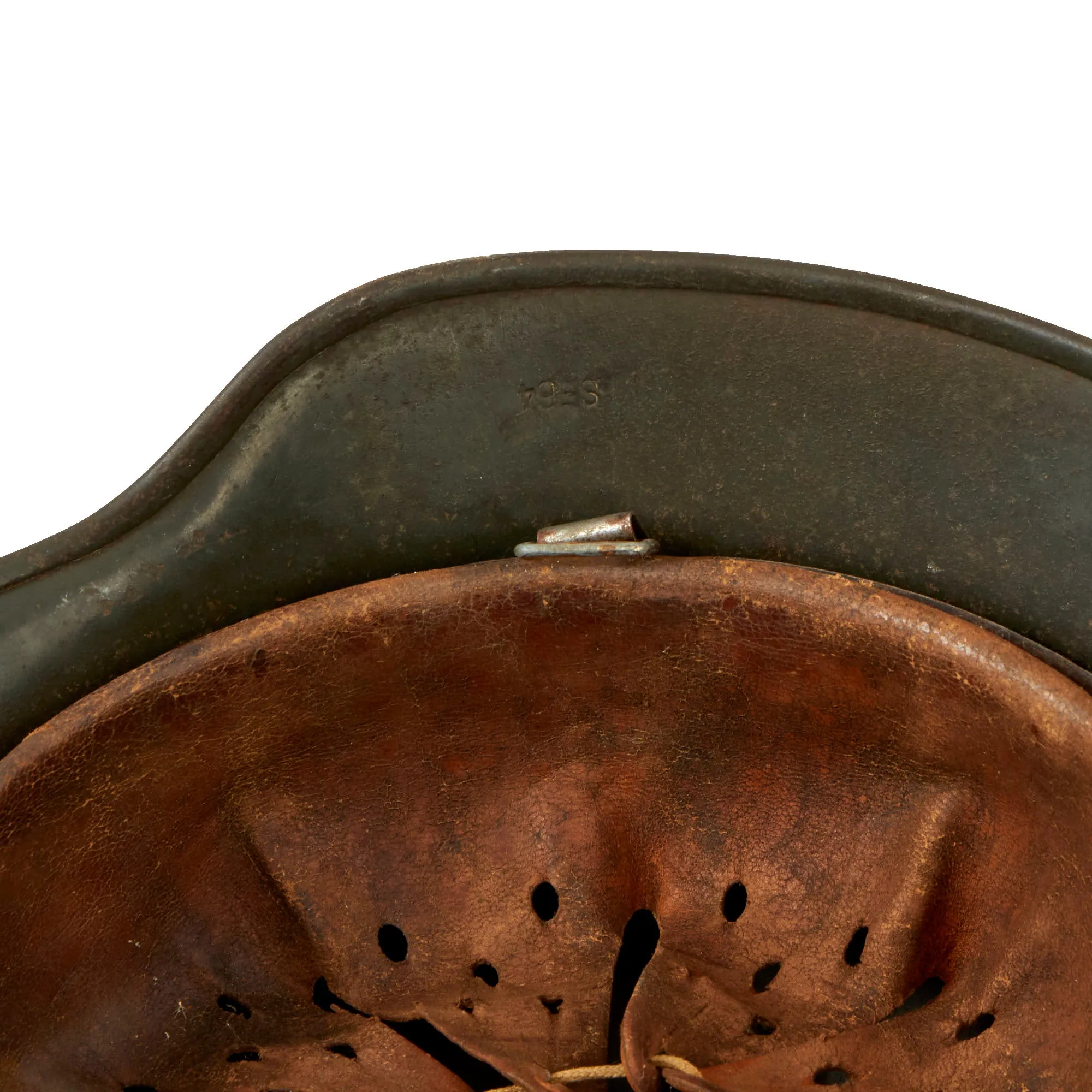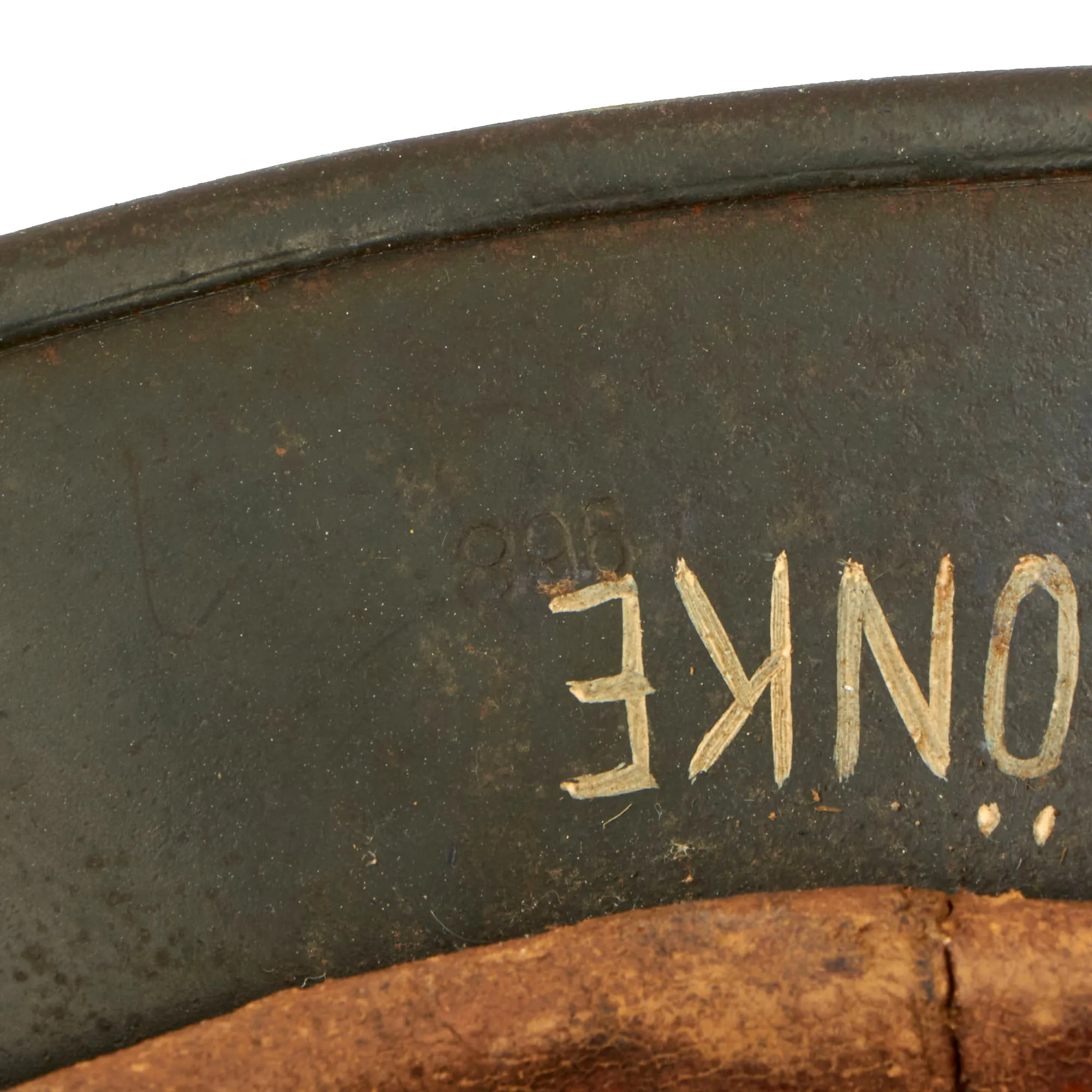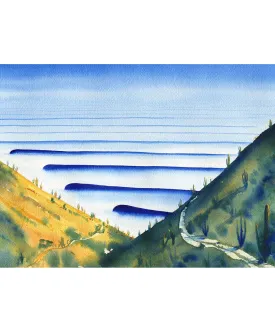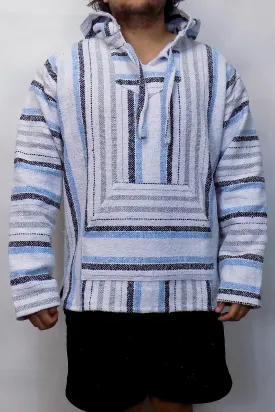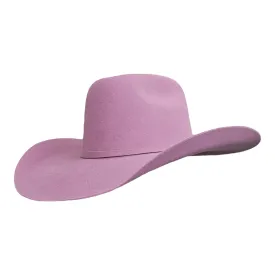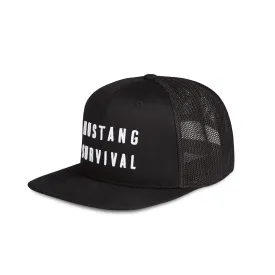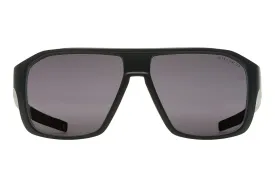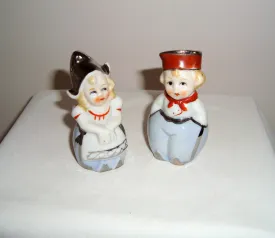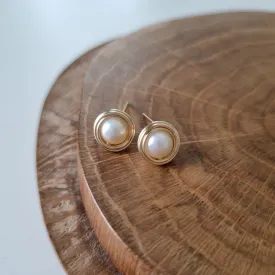Original Item: Only One Available. This is a very nice all original example of a German Model 35 Steel helmet, as issued to the Kriegsmarine (Navy), which looks to have had a long and interesting history during the war. This stamped sheet steel construction helmet was overpainted with a green and tan camouflage during the war, which was relatively common when used by members of the Küstenartillerie (coastal artillery) and other Kriegsmarine installations based on land. They were also kept on ships for landing parties. It shows wear consistent with use in the field, but there are no major dents or areas of oxidation. These are very rare, and we have only had a handful previously, compared to numerous Heer examples.
Then the camouflage was applied to the helmet, it looks like it was partially cleaned off of the decal, however unfortunately the decal was not originally applied well. This has caused much of the decal to flake away, taking any paint on top with it. currently only about 25% remains in the upper right corner. However, it is unmistakable as the correct Kriegsmarine Gold, only used on these helmets, and not a yellowed Silver Heer decal. This is a great example of a Kriegsmarine M35 helmet, with great service used look!
The reverse, interior, neck guard apron is serial number stamped 4968 and the interior, left side, apron has the stamped manufacturer's code and size, SE64 indicating that it was manufactured by Sächsische Emaillier und Stanzwerke A.G. of Lauter, Germany. Size 64 is a nice medium size that can accommodate liners from 56cm to 57cm or US 7 to 7 1/8. Size 64 shells are harder to find and are therefore more valuable to a collector. This helmet is named KRÖNKE at the rear over the lot number, which is in the correct range for a Kriegsmarine helmet based on heat lot research. Definitely lots of potential in this helmet!
All three liner retaining pins are intact, with the paint well-retained on the front two, while the rear pin is missing most of the paint. The interior of the helmet still has the original M31 leather liner, which shows moderate wear from use in service. All 8 of the leather "fingers" are present and supple, as is the top tie, which did tear through one of the fingers after the reinforcement leather eyelet came unglued. The mid war issue galvanized steel liner band is marked on the left outer side with 64 nA / 56, indicating that the liner is a size 56, intended for a 64 shell. We checked the right side of the liner band, however it is oxidized, so we cannot read the maker, and there is also no chinstrap installed on the loops.
Overall a great service used M35 Camouflage Overpainted Single Decal Kriegsmarine Navy helmet, with a great look! M35 helmets of this quality are always the hardest to find on the market. This is an item that will only continue to appreciate in value over time.
The first "modern" steel helmets were introduced by the French army in early 1915 and were shortly followed by the British army later that year. With plans on the drawing board, experimental helmets in the field, ("Gaede" helmet), and some captured French and British helmets the German army began tests for their own steel helmet at the Kummersdorf Proving Grounds in November, and in the field in December 1915. An acceptable pattern was developed and approved and production began at Eisen-und Hüttenwerke, AG Thale/Harz, (Iron and Foundry Works), in the spring of 1916.
These first modern M16 helmets evolved into the M18 helmets by the end of WWI. The M16 and M18 helmets remained in usage through-out the Weimar Reichswehr, (National Defence Force, Circa 1919-1933), era and on into the early years of the Third Reich until the development of the smaller, lighter M35 style helmet in June 1935.
In 1934 tests began on an improved Stahlhelm, whose design was a development of World War I models. The Eisenhüttenwerke company of Thale carried out prototype design and testing, with Dr. Friedrich Schwerd once again taking a hand.
The new helmet was pressed from sheets of molybdenum steel in several stages. The size of the flared visor and skirt was reduced, and the large projecting lugs for the obsolete armor shield were eliminated. The ventilator holes were retained, but were set in smaller hollow rivets mounted to the helmet's shell. The edges of the shell were rolled over, creating a smooth edge along the helmet. Finally, a completely new leather suspension, or liner, was incorporated that greatly improved the helmet's safety, adjustability, and comfort for each wearer. These improvements made the new M1935 helmet lighter, more compact, and more comfortable to wear than the previous designs.
The Army's Supreme Command officially accepted the new helmet on June 25, 1935 and it was intended to replace all other helmets in service.
The M1935 design was slightly modified in 1940 to simplify its construction, the manufacturing process now incorporating more automated stamping methods. The principal change was to stamp the ventilator hole mounts directly onto the shell, rather than utilizing separate fittings. In other respects, the M1940 helmet was identical to the M1935. The Germans still referred to the M1940 as the M1935, while the M1940 designation were given by collectors.
The last wartime upgrade to the standard helmet took place on 6 July 1942 at the request of the Army High Command. The rolled edge found on M1935 and M1940 helmets was discontinued as a measure of economy. On 1 August 1942 the first M1942 helmets were placed into production, and this was the model produced until late in the war, when most factories were captured or stood idle due to material shortages.




